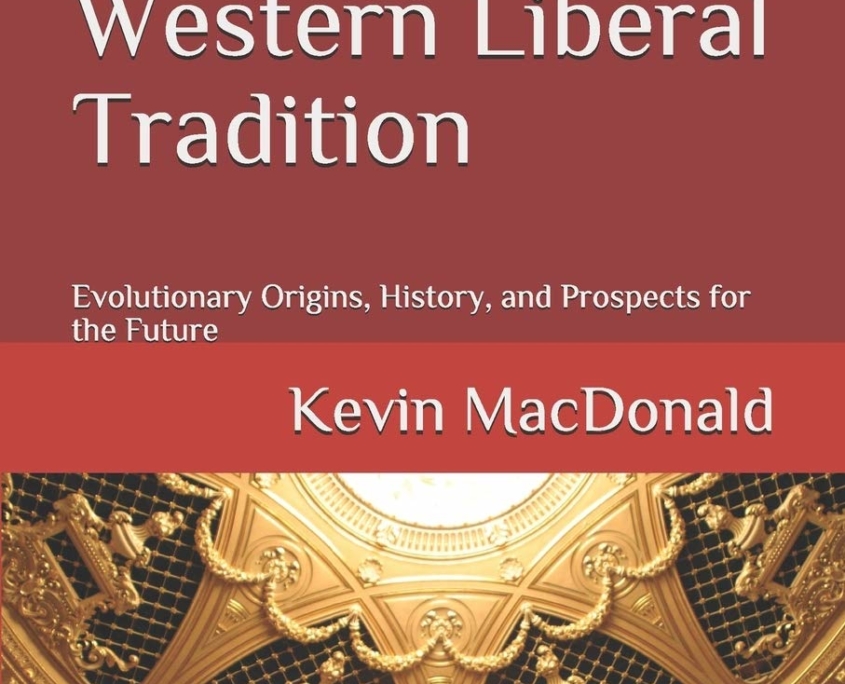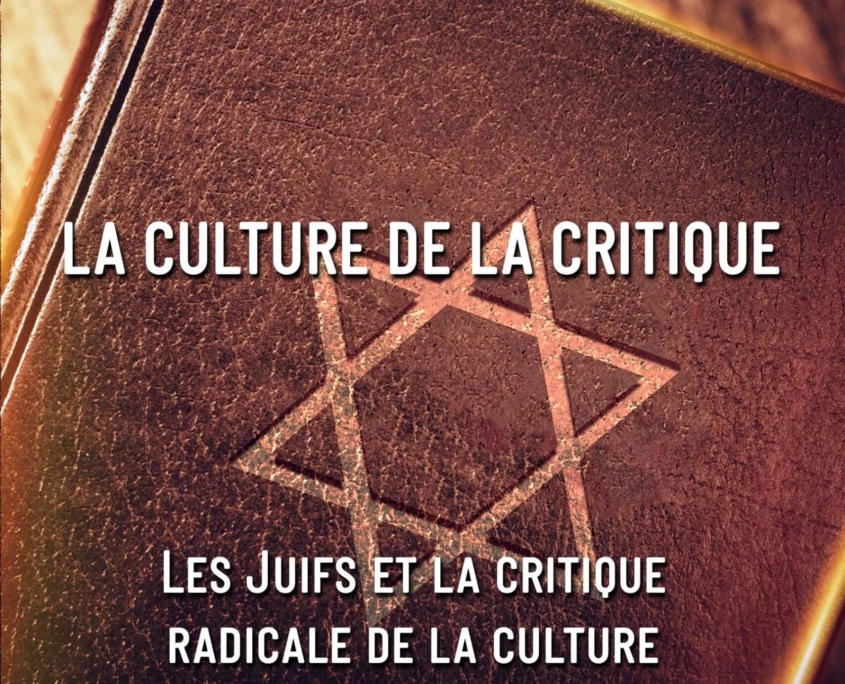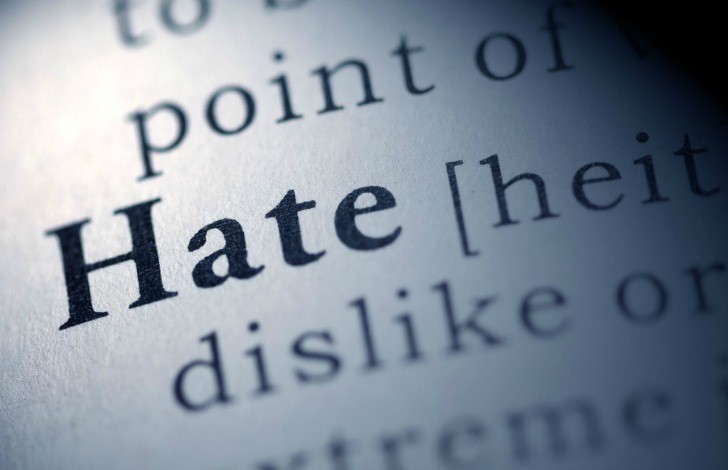
“Nature seems made up of antipathies: without something to hate, we should lose the very spring of thought and action. … Hatred alone is immortal.”
William Hazlitt, 1826
No human feeling has been more maligned, slandered, abused, and misappropriated in contemporary culture than the humble and dignified hatred. Wars have been declared against it. Legislation seeks everywhere to strangle it. It has been presented as the source of all evils, and as the great enemy of our time. This primordial emotion is the red-headed stepchild of our contemporary psychological spectrum and the exile of our political language, ever-present but covered up out of embarrassment, shame, or subterfuge. Entire categories of crime and speech have been segregated under the rubric of Hate, and set aside for especially harsh punishment. “Hate facts” are provable realities allegedly tainted with hate, and thus represent aspects of material existence deemed so awful they are denied despite their evident truth.
Hate, it would seem, just can’t get a break. Few are willing to speak on its behalf, even among those classed primarily as “haters.” The latter are apt to protest to deaf ears that they don’t hate anyone but merely love their own kind. All of this denial and disavowal occurs despite the fact hate is as crucial to human existence, if not more so, as love. It is omnipresent. Without hate, you have no history and no literature, no passion and no capacity for action. The plot of the Iliad essentially revolves around the wait for Achilles to reach an optimal state of hatred that then morphs into martial ecstasy and final victory. Imagine Hamlet merely possessing a mediocre dislike of his uncle Claudius. Without Ahab’s detestation of the whale there is no Moby Dick. Even if it were true that love makes the world go round, it would appear that hate greases the axle. It’s time for an exploration from a justified hater.
The Genealogy of Postmodern Morals
The origin of the contemporary war on hate is worthy of some consideration. Religion, contra Nietzsche, doesn’t offer a complete explanation. Take the Bible, for instance, which for the most part offers no injunction against enmity, intense dislike, or revenge except in cases of silent resentment in fraternal, co-ethnic, or communal relationships (Lev. 19:17, 1 John 3:15). The Hebrew god is said to be a hater of lying (Ps. 119:163) and the Psalmist professes to hate his enemies (Ps.139:22) with a “perfect hatred.” Ecclesiastes (Ecc. 3:8) mentions, without judgment or further commentary, that there is “a time to love, and a time to hate; a time of war, and a time of peace.” The entire history of the Jewish people can be read as involving a quite shameless hatred for the rest of humanity. The only exception in the Bible is located within the “love thy enemy” section of the Sermon on the Mount (Matthew 5:44) which, given that it was most probably written while the persecutions under Nero were ongoing, was likely inserted to both promote non-violent resistance and represent a further denial that Christians were a danger to Roman authority (alongside “render under Caesar” etc., also in Matthew). It sits uneasily with much of the rest of the Hebrew and Christian scriptures, which makes Nietzsche’s critique of the entirety of these religions as exemplifying unique slave moralities, based almost entirely on amplifications of the concepts of loving one’s enemy and “turning the other cheek,” seem rather tendentious.[1]
Opposition to hatred, and being kind to one’s enemies, can as easily be found among the ancient Stoics and the Buddhists. For Nietzsche, although he focused overwhelmingly on Judaism and Christianity, these were all positions of life-denial, weakness, and dishonesty. Certainly these responses were weaker than simply hating your enemy. For the Stoics, the goal was individual happiness, and resentment and intense dislike were viewed simply as burdensome barriers to that goal — better to be rid of the enemy, yes, but also to be rid of negative feelings for them. For the Buddhists, the soft, supple branch that bends with the fall of heavy snow is more likely to survive winter than the brittle branch that resists and then snaps under increasing weight. Giving way, if necessary, to enemies, was therefore viewed as a form of tactical strength and a means to survival and happiness.
These positions are ultimately weak and evasive in my opinion, because they reject the principles of overcoming obstacles and engaging in direct competition with opponents. Hatred is only a psychological burden when it can’t be fulfilled, thus involving not only hate of the other for their provocation, but hate of the self for the inability to obtain resolution. The mental burden of hatred is found predominantly in the latter, and many flee from it into perverse and ultimately insincere forms of forgiveness. When they “forgive their enemies” they are rather forgiving themselves for not overcoming their enemies.[2] The Stoic and Buddhist approaches are therefore weak not simply because of their superficial rejection of hatred, but because their rejections are themselves evidence of intrinsic weakness in the rejector. If history tells us only one thing, however, it is that no man, and no religion, is immune to the arising of hate, and few escape it altogether. Differences in outward expression, in Christianity, Buddhism, Stoicism, or Judaism thereafter are mere points of tactics.
Unlike Nietzsche, I don’t think specific answers for our current situation can be found so clearly in religion, or even in the distant past. Hate, and the flight from hate among the weak and cowardly, have been with us from the beginning of time, even if it is worsening in the present age. Contemporary hypocrisy and widespread dishonesty in relation to hatred is primarily a result of decadence in modernity, and is related in no small part to duplicitous Jewish activism on behalf of the emotional anaesthetic known widely now as “tolerance.” What is the genealogy of postmodern morals? In ‘The Genius of the Crowd,” Charles Bukowski wrote that “the best at hate are those who preach love,” which couldn’t be more appropriately applied to those now insisting that every country on earth should learn to love their Jews. We live in an age where the problem isn’t that “hate is on the march” but that it marches under innumerable masks, appearing here as “love” and there as “tolerance.” The “war on hate” that we witness today isn’t a war on hate at all, but a hypocritical war on the White capacity to feel and express hate. It should be starkly obvious that every other race on earth is free to hold all the resentments, bitterness, aggression, and calculated coldness it wants, but these qualities are deemed too dangerous, too volatile in Whites. Better that Whites be rendered emotional eunuchs; timid cattle put out to graze in pastures of fast food and mind-blunting entertainment. Stoicism, Buddhism, and interfaith “tolerance” branches of Christianity are enjoying a widespread boom across the West, fueled by a culture that wants Whites to be “the branch that bends.” And rest assured it is only in the West that the “war on hate” is taking place. There is no universal campaign for universal brotherhood and friendship outside ubiquitous Western multicultural propaganda. The campaign against hate, including its legal manifestations, is inseparable from multiculturalism, mass immigration, global capitalism, and the demographic decline of Whites.
War on Hate, War on Whites
It has become an axiom of Western culture that “being strongly against” anything is morally unsound or quasi-fascistic. Everywhere, and in all sections of the political spectrum, groups struggle to avoid being seen as “against” something, lest they be accused of hating what they oppose. Better to be “pro-life” than “anti-abortion,” and better to be “pro-choice” than “anti-foetus”! Better to be “for strong borders” than to be “against immigration.” Better to say you “support the Palestinians” rather than bluntly declare yourself an “anti-Zionist.” Better to say you support the privacy of women than let it be known you despise the notion of gender-bending miscreants entering into bathrooms alongside your wives and daughters. Better to say you are “pro religious freedom” than assert your hatred of the notion that two men can marry each other. Every sinew is strained to couch one’s feelings in positive terminology, so that you might be seen as a “positive” person with “positive” intentions. Even in our own movement I’ve noticed slices of semi-sincere rhetoric where we increasingly preface our assertions of identity and interests with claims that we support the identity and interests of all peoples (I don’t), even the Zionism of the Jews (I don’t)! The rot, my friends, is universal. Everywhere in the West, being “anti” anything is regarded as highly suspect, unless you are “anti-fascist” or “anti-racist,” in which case you are merely against the idea that Whites have the audacity to be against something.
The war on hate is founded on a ridiculous premise — that everything in modern culture is perfectly agreeable and that there are no logical or moral grounds for strongly opposing anything or anyone in our midst. What is hatred? A feeling of intense dislike. Contemporary political and social mores would have you believe that any White man or woman who looked about them and was aroused to a state of intense dislike must be some kind of monster. Merely sharing your feelings of intense dislike, now termed “inciting hatred,” has been deemed criminal conduct in scores of Western countries. Criminal conduct! This despite the fact there has never been a point in our history more deserving of the deepest loathing, the most scathing contempt, and the most vicious hatred. This seething morass of ethnic encroachment, miscegenation, perversion, ignorance, degeneration, degradation, and humiliation is worthy of every last drop of spite and abhorrence that can feasibly be poured upon it. I hate it all, and if you have any genuine natural instincts left, and if you haven’t been conditioned into a perpetual state of consumerist ennui, you will hate it too.
I take particular pleasure in considering the appellation “Hope not Hate,” attached to a UK “anti-fascist” group dedicated to being against the idea that White people are against anything. To be sure, they occasionally pepper their activities with token gestures on Islamic extremism, but really they should be called “Hope not [White] Hate.” I find it especially interesting that they don’t call themselves “Love not Hate,” which would surely be the logical way of presenting an alternative to hate.
And yet it makes sense that they didn’t choose “love” for two reasons. In the first instance, anyone who opposes hate must intrinsically obstruct love. These opposites exist on the same emotional spectrum, and if you distance from one you enter into a type of emotional tunnel vision in which you lose sight of the other. If anyone tells you earnestly that they don’t hate anyone, you can be sure you’re either talking to a liar or a passionless member of the emotionally castrated. Secondly, those behind this group were probably confronted with the reality that what they have designated “hate” — nativism and nationalism — can’t rationally be opposed with “love.” What were activists and supporters supposed to love? Hordes of anonymous third world migrants? Clearly too large an ask, they settled instead on “hope.” What is hope? Hope for what? Hope is optimism at its most irrational extreme. Hope is when you’re chased to the edge of a cliff by a pack of rabid dogs, when you look down at foaming waves, and “hope” that when you jump, you’ll miss the rocks and survive. Hope is what you feel when all options, and all rational grounds for optimism, are exhausted. Truly there can be no better name for an organization dedicated to the flooding of White countries with mass migration. I congratulate the group’s leaders on their decision.
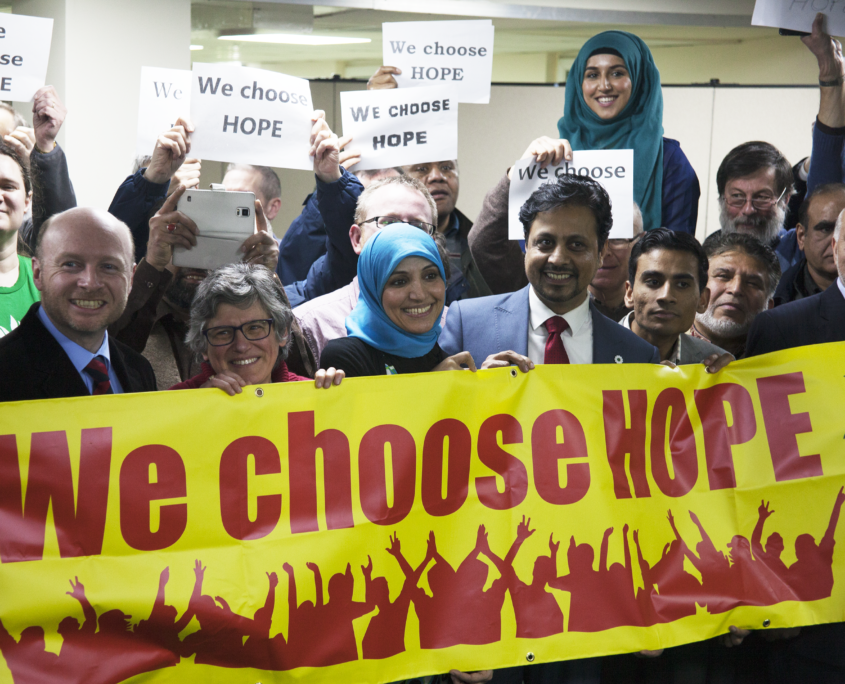
It is a special irony, of course, that the priests of the war on hate are the Jews who, for more than a century now, have posed themselves as angelic warriors against bigotry and hatred. This from a people known since the days of Caesar as world-haters possessing the most extraordinary instinct for misanthropy. And here, perhaps is their greatest strength — that they learned to preach anti-hatred while retaining, protecting, and refining their own hatreds. For what does the Jew possess more intense dislike than the homogeneous White nation? Fingernails running down a chalkboard — this is the traditional White nation to the Jews.
The Jewish campaign against hate is a new attempt at a revolution in values. Those European imbeciles who nibble at this bait, convinced that they are part of some moral crusade for universal brotherhood, are throwing themselves into a campaign supporting Jewish hate. Isn’t it obvious that Europeans who adopt the new values aren’t “against hate” but merely sublimate their instincts and agree to hate themselves? What are speech laws, waves of migrants, and the imposition of new values by outsiders if not a hateful violation of sovereignty and the infliction of a systematic cruelty? Imagine the audacity of introducing these measures under the banner of “fighting hate”! All of these things, to the extent that they restrict and punish the natural feelings of the European, bring obvious pleasure and satisfaction to Jews. It is a matter of great joy to Jews that Whites should sign up by the thousands to purge their own ranks of all capacity for opposition. By preaching “a world without hate,” Jews promote a world of docile and dwindling Whites. And they are considerably advanced in this cause.
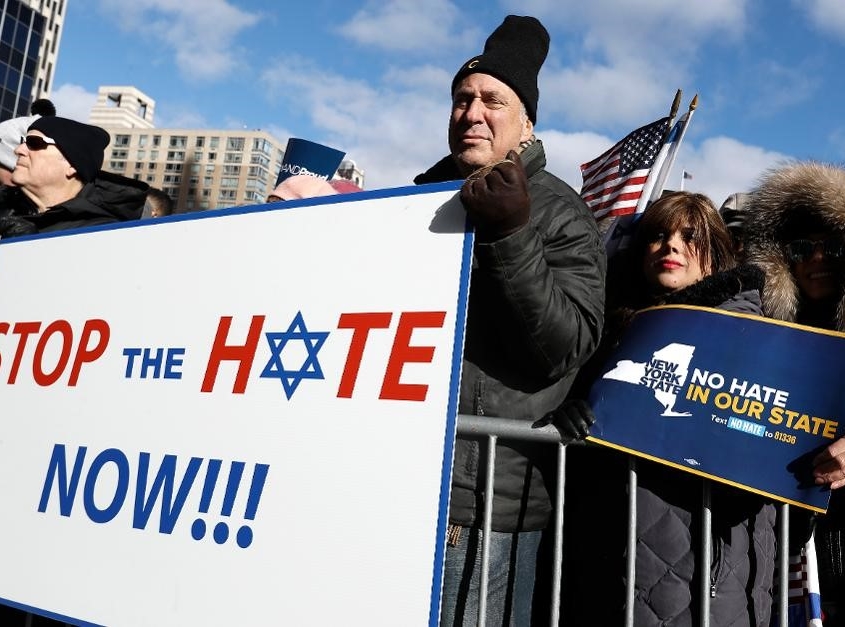
What is hate? A feeling of intense dislike, but also something else. Coming to the realiation that one intensely dislikes something is the prelude to action against it. I need to be clear on my meaning here. Contemporary propaganda saturation would have you believe that hate “causes” violence and terrorism. This is a nonsense. Consult the work of any serious terrorism expert and you won’t find “hate” anywhere listed as a serious explanation for any act of terrorism at any point in history. Hate is primarily an understanding, and then a state of mind. One can find terrorism motivated in small part by hate, but also by love, fear, confusion, desperation, tactical consideration, religious enthusiasm, personal anguish, psychopathy, peer pressure, mental illness, drug addiction, greed and even a combination of all of these things. When I say that hate is primarily an understanding I mean that it shapes trajectories of behaviour and conditions responses. Hate is not spontaneously self-creating. It doesn’t arise in a given man simply because that man is “bad.” Hate arises in response to stimuli, some kind of provocation. Hate always has a cause and an object. And the person at peace in their hatred is someone willing to believe that he can ultimately overcome and defeat what he hates.
The Longest Hatred
Jews have described anti-Semitism as the “longest hatred.” I disagree. It is clear to any educated onlooker that Semitism itself, insofar as Semitism is defined as the behavioural expression of the Jewish hatred of mankind, represents the oldest hatred in recorded history. The interesting point here is that all Jewish examinations of what they perceive to be the “longest hatred” are conspicuous in their avoidance of the issue of cause and object. Hatred of the Jews is, for Jews, entirely spontaneous and self-creating. Hatred, a human emotion, is often quarantined from reasonable human consideration and represented in Jewish understanding as something not-quite-human — a virus, a theological mutation, or a psychological malfunction. Europeans in Jewish writings are quintessential haters insofar as this involves Europeans giving themselves over to something entirely irrational and inexplicable. Unwilling to examine their own role as cause and object, or to look at their own hatreds in the cold light of day, Jews promote the idea that hate itself, or at least hate among Europeans, is always devoid of cause and object. The White man’s hate is always spontaneous, always irrational, always self-creating, always inexplicable. Ultimately, as we have seen, hate in the European is “criminal.”
If Semitism is, as I have argued, the true “longest hatred,” then what is its cause and object? Causes here are both internal and external to Jews. Judaism, the precise origins of which will remain forever unknown and unknowable, commands a strict separation from other humans and the formation of an ethnic caste above all others. It asserts an ultimate, cosmic superiority, and permits the infliction of a lesser ethics upon presumed inferiors. Jewish hate has arisen from time immemorial in the simple fact that other humans (collectively lumped together simply as goyim) refuse to accept this state of affairs, and that they fail to indulge Judaism’s dominance fantasy. From the beginning of Judaism until the present day, Jews have encountered populations who refuse to see Jews as their superiors. These non-Jewish populations have consistently refused to be subjected to lesser treatment, and they have hated the Jews for attempting to impose it upon them. Jews have responded to this reactionary hatred with a further hatred of their own — a dishonest hatred that hides even from itself and postures as a morose remembering of past injustices. The cycle continues endlessly, with Jewish hatred thus internally and perpetually powered via the momentum of the past.
The lachrymose history of the Jews is in fact the story of frustrated attempts at dominance, and although it presents as a tale of woe, it is in fact a hit-list for revenge. Adam and Gedaliah Afterman have written of the Medieval period as a time in which Jews cultivated a powerful theology/ideology of revenge for perceived wrongs perpetrated by host populations. One Medieval Ashkenazi tale, for example, portrays God as “listing on his garment” the names of all Jewish victims of Gentiles over the course of time so that in the future the deity would have a record of those to be avenged.[3] Isn’t it clear that this tale is a mere externalizing of deeper instincts? Isn’t Jewish culture and historiography the real “garment” upon which Jews name their “victims,” thereby paving the way for a future vengeance executed not by a deity but by the true object of Jewish worship — the Jews themselves? Every act of Jewish hate is therefore ultimately dishonest, being predicated on false conceptions of vengeance (since the antagonistic Jews were never truly wronged) and therefore incapable of being fulfilled. Jewish hate does not act on immediate causes and objects, but on causes and objects from all nations and from all time periods including the distant past and future. The contemporary infliction of mass migration and cultural degradation on the United States is therefore part of a scheme of vengeance that has its roots in ancient Rome, and in medieval Toledo, and in 1920s Romania, etc. In this kaleidoscopic form of self-denial, Jews seek to fundamentally change your nation not because they “hate” you, and certainly not because they love you, but because they know only too well the dangers of the past. In the midst of such reasoning, their obvious hatred is obscured even to many of their own number.

By contrast, the hatred of the Europeans for the Jews, being honest to itself, has always been capable of fulfilment. European hate for the Jews has been predicated much less on the past than on immediate cause and object, and European resistance to attempts at Jewish dominance has for the most part been satisfied with curtailments of certain monopolies. We have no equivalent of the lachrymose history, and are notable for our lack of any kind of “garment” on which we’ve listed the victims of Jewish machinations. Europeans have never sublimated their hatred for outsiders, or disguised these hatreds to themselves. European hatred doesn’t hide from itself, or take on the aspect of mere resentment. It has always been concerned with action and results. Expulsions, the most radical answer to provocative Jewish causes and objects, were in most cases short-lived, illustrating the lack of serious grudges among Europeans and a willingness to renew the contexts for relations. This alleged “longest hatred” among the Europeans therefore has the remarkable quality of large gaps, resets, reversals, and numerous chances at decent relationships. As a people, we have always lived in the present and, but for the fact that this has been taken advantage of, this forgetfulness has, as Nietzsche observed, been a source of robust health, action, joy, and pride. The only error of the historical Europeans was to assume that the slate had also been wiped clean on the Jewish side, whereas in fact the Judaic garment of vengeance was growing ever-longer.
Conclusion
The current revolution in values is designed to make Whites the “branch that bends.” In giving up hate, Europeans everywhere will have resigned themselves to non-resistance and to a psychological state in which successful opposition to the negative forces of contemporary life becomes impossible. Honest hate among the strong is healthy, good, and necessary. It is especially necessary in an environment in which opponents of all kinds are engaged in mass duplicity, disguising their own selfish interests as “love,” their own grudges as “tolerance,” and their own hatred as “kindness.” Surrounded by detestable things lingering under dishonesty, we must embrace a “perfect hatred,” and be at peace in it, in the certain knowledge that, while the weak fall by the way side, we will carry it to its completion.
[1] I tend to concur with Roger Scruton’s assessment of Nietzsche’s fixation here that it was both “obsessive, if not tedious.” See Scruton, A Short History of Modern Philosophy (1995).
[2] This kind of thinking has expanded rapidly in modernity because justice has become an increasingly watered down and impersonal affair in which individual access to adequate retribution is frustrated.
[3] A. Afterman & G. Afterman, “Meir Kahane and Contemporary Jewish Theology of Revenge,” Soundings: An Interdisciplinary Journal, Vol. 98, No. 2, (2015), 192-217, (197).
